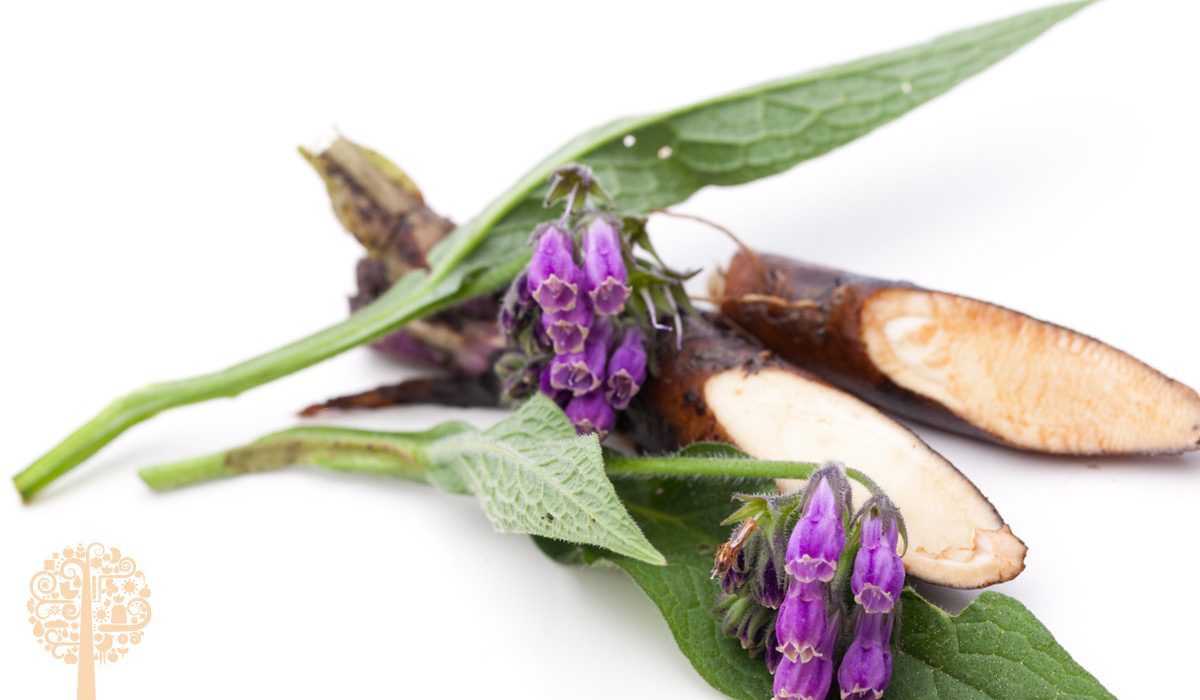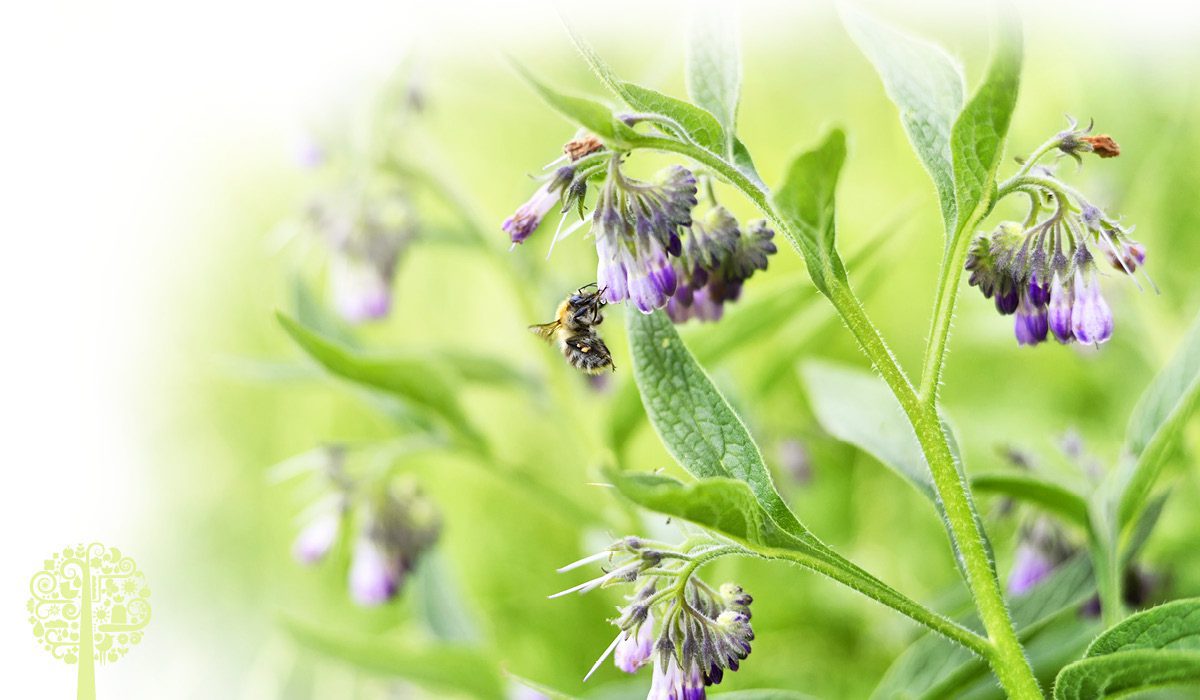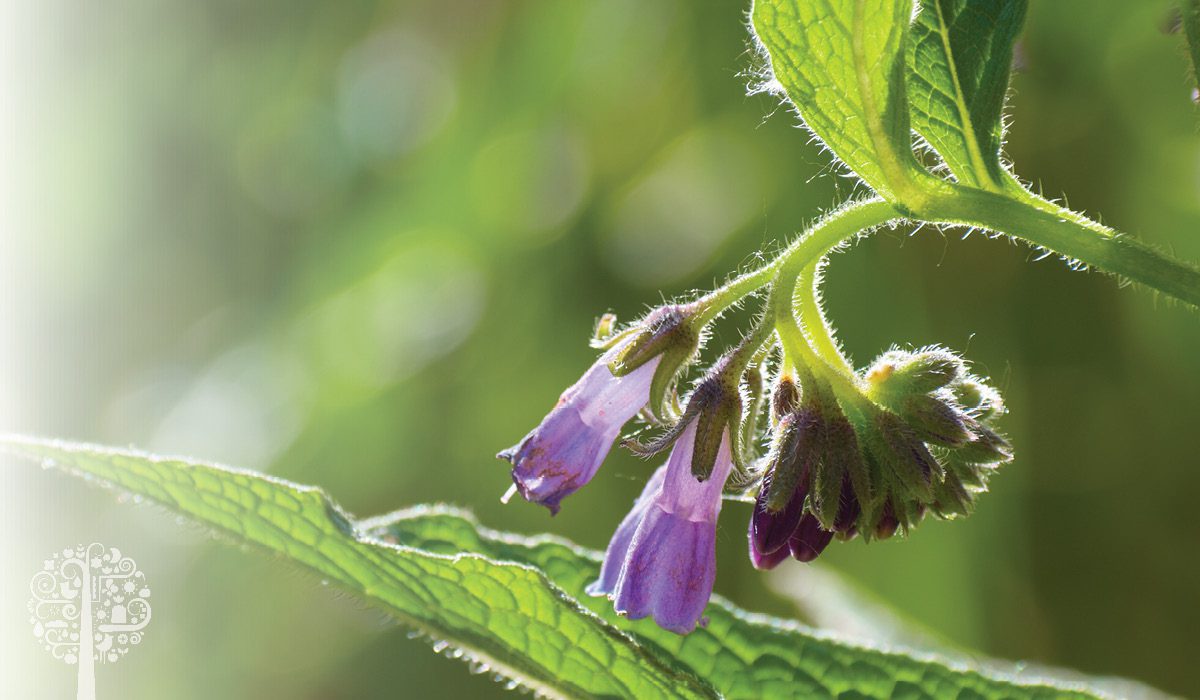Comfrey In The Garden: A Powerful Medicinal Weed
Comfrey is not typically found in floral gardens as it is not necessarily an attractive or colorful plant. Although humble in appearance, common comfrey is a must-have for the medicinal grower and offers several health benefits. Fast-spreading and reaching nearly four feet in height, comfrey is therapeutic to both human beings and the garden!
A Brief History
Comfrey (Symphytum officinale) has been cultivated and used for its medicine for over 2,000 years. The most ancient uses of the plant were to treat bruises and sprains with poultices made from a strong decoction of the root.

Later in history, comfrey’s reputation as an efficient health ally caused the European settlers to bring the seeds and plants with them to America.
How It Grows
The plant doesn’t often grow in the wild but can be found on old farms, along some roadsides, and in damp places. Comfrey prefers moist soil rich in organic matter to thrive and reach an impressive size. As weeds are known to do, the leafy perennial spreads quickly by seed and root cuttings. Once comfrey establishes itself in a garden, it is nearly impossible to irradicate. In just a few growing seasons, you will have a lush comfrey patch and several plants to share with fellow gardeners.
To Unite Or Join Together
Common comfrey’s Greek and Latin origins (Symphytum officinale) means to unite and to join together. Also called the knitbone plant, boneset, or knitback, the many names the plant goes by express its considerable powers and virtues. Comfrey has long been used in folk herbal medicine as an effective treatment for broken bones, tissue damage, and to heal wounds. The plant also can help treat muscle and joint pain, as well as problems with tendons and ligaments.
Medicinal Properties
The roots and leaves are most often used as medicine. However, the roots are best, as they contain a more generous amount of beneficial chemical components. Comfrey’s root mucilage is one of the constituents responsible for the plant’s incredible soothing action. It has a very distinctive, slippery texture, and this gel-like mass helps protect irritated tissues in the body.
Allantoin, another component of comfrey, stimulates cell proliferation, which accelerates wound healing. The healing process of the skin can be so fast that it can trap the infection, so be sure to clean the wound before treatment properly.

Treating superficial wounds with comfrey can prevent scar formation, thanks to the activity of the allantoin component. Allantoin can also diffuse through the skin and tissue, making it an excellent external treatment for bone fractures. Furthermore, the plant helps soothe and condition the skin. The presence of rosmarinic acid relieves pain and inflammation.
A Comfrey Salve
Comfrey leaves and roots are often combined with calendula flowers (Calendula officinalis) and plantain leaves (Plantago major) to make an efficient healing salve for external wounds, bruises, minor burns and injuries. The balm is easily made by infusing equal parts of dried plant material with good quality organic olive oil for four to six weeks in a warm, dark place. Once the infused oil is filtered, melted beeswax is added for its hardening properties. Use one part beeswax to four parts oil. Store the salve in a sterilized glass jar. It will keep as long as the shelf-life of the oil used in the recipe. If it starts to smell rancid, discard.
A Garden Companion
Comfey is an excellent natural green fertilizer! But it also a perfect addition to any garden for its humble purple flowers that provide sweet nectar to essential pollinators, such as bees. The tiny blooms also attract beneficial insects that munch on unwanted garden invaders.
A Few Words Of Caution
Many plants are similar in appearance to comfrey, so be sure you know what you’re looking at before foraging. The copy-cat plant to be most concerned about is foxglove (Digitalis purpurea), which is extremely poisonous and possibly deadly! In early spring, the young leaves of both plants look remarkably similar. Ask an experienced herbalist for help.
Until very recently, people would eat the leaves and ingest infusions. They would drink herbal medicinal comfrey teas to treat several ailments such as gastric ulcers, rheumatic pain, arthritis, bronchitis, lung congestion, and colitis. Despite the therapeutic benefits of these herbal treatments, scientific research shows that comfrey also contains pyrrolizidine alkaloids. These alkaloids are linked to hepatic cancers and hepatotoxicity in animal and clinical studies.

If used long-term, comfrey can harm the liver. Many countries say only the external use of comfrey is safe and approved, as a limited amount of the pyrrolizidine alkaloids are absorbed through the skin. It is critical to remember that all medicinal herbs that have the power to do good also have the potential to cause harm.
Disclaimer
Common comfrey is a useful medicinal herb and can be quite helpful if used correctly. It is a beautiful herbal ally, and proper knowledge will help you respect the plant’s limits without fearing it. As with all medicinal herbs, please speak with your healthcare provider before using comfrey to be sure it’s safe for your needs. Patients with hypersensitivity or allergic reactions to the plant should avoid the external use of comfrey. Do not use during pregnancy or nursing, with infants, or if you have liver or kidney disease.




